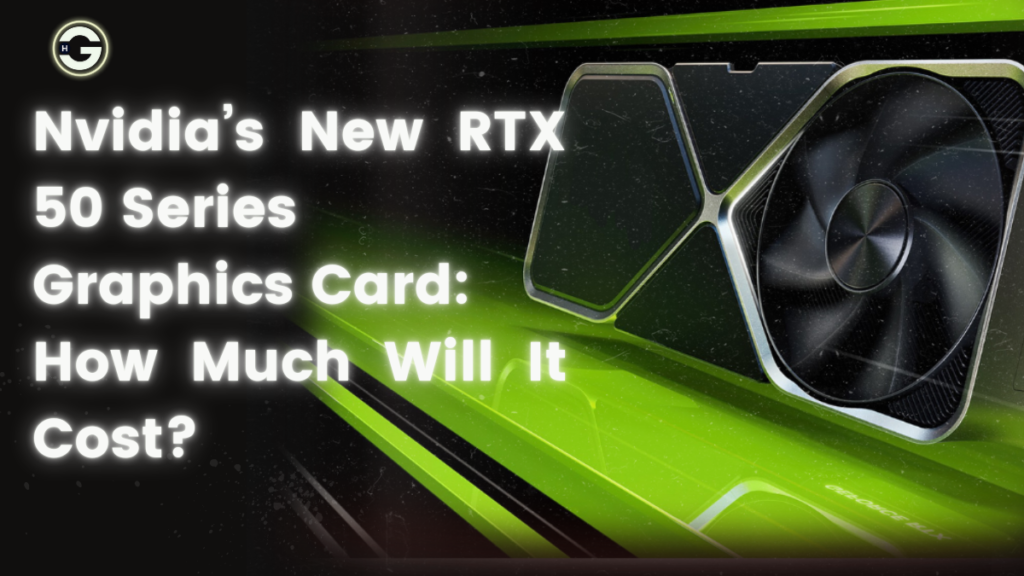The Nvidia RTX 50 series graphics cards have become one of the most anticipated releases in the tech world. With Nvidia’s reputation for delivering cutting-edge technology and unparalleled gaming performance, the RTX 50 series promises to set new benchmarks. However, a burning question on everyone’s mind is: how much will these graphics cards cost? Let’s delve into what we know so far about pricing, features, and the factors influencing the cost of Nvidia’s RTX 50 series.
What We Know About the RTX 50 Series
Nvidia has consistently pushed the boundaries of GPU technology with each new release. The RTX 50 series is rumored to feature:
- Next-Generation Architecture: Built on Nvidia’s latest architecture, likely leveraging a 3nm or advanced node process for improved efficiency and performance.
- AI Enhancements: Improved AI-powered features like DLSS 4.0 for better gaming visuals and performance.
- Higher VRAM: Increased memory capacity to handle more demanding workloads, including 4K and 8K gaming.
- Advanced Ray Tracing: Further optimization for real-time ray tracing, providing photorealistic lighting and shadow effects.
These improvements promise groundbreaking performance, but they also raise the question of affordability.
Predicted Pricing for the RTX 50 Series
While Nvidia has yet to officially announce pricing, we can make educated guesses based on previous launches and market trends.
Historical Pricing Trends
- RTX 30 Series:
- RTX 3060: $329
- RTX 3080: $699
- RTX 3090: $1,499
- RTX 40 Series:
- RTX 4060: $299
- RTX 4080: $1,199
- RTX 4090: $1,599
With each generation, Nvidia’s flagship cards have seen incremental price increases due to enhanced features, R&D costs, and market demands.
Estimated Prices for RTX 50 Series
- RTX 5060: Estimated at $349-$399. Ideal for gamers seeking entry-level performance with modern features.
- RTX 5080: Expected to be priced around $1,299-$1,499, offering a balance between price and high-end performance.
- RTX 5090: Likely to exceed $1,699, targeting enthusiasts and professionals demanding the best of the best.
These estimates reflect Nvidia’s tendency to align pricing with performance tiers while addressing inflation and manufacturing costs.
Factors Influencing RTX 50 Series Pricing
Several factors could impact the final price of Nvidia’s RTX 50 series graphics cards:
- Manufacturing Costs: Advanced fabrication nodes (e.g., 3nm) are more expensive, potentially driving up production costs.
- Global Supply Chain Issues: Semiconductor shortages and logistical challenges may influence pricing.
- Market Competition: AMD and Intel’s competing GPUs could pressure Nvidia to adjust prices to maintain market share.
- Features and Performance: Enhanced features like DLSS 4.0 and improved ray tracing could justify a premium price tag.
- Economic Factors: Global inflation and fluctuating currency exchange rates play a significant role in final consumer pricing.
Is It Worth the Price?
For many gamers and professionals, Nvidia’s RTX series represents the gold standard in GPU technology. The RTX 50 series is expected to deliver:
- Unmatched Gaming Performance: Perfect for 4K and 8K gaming enthusiasts.
- Future-Proofing: Designed to handle upcoming AAA titles and creative workloads.
- Energy Efficiency: Improved architecture ensures better performance-per-watt.
For those invested in high-end gaming, content creation, or AI-driven tasks, the RTX 50 series could be a worthy investment despite the likely high price tag.
Conclusion
While the exact cost of Nvidia’s RTX 50 series remains a mystery, it’s clear that the pricing will reflect the cutting-edge technology and performance the series promises to deliver. As we await official announcements, it’s wise to keep an eye on market trends and competitor offerings to make an informed purchase decision. Whether you’re a gamer, a creative professional, or a tech enthusiast, the RTX 50 series is shaping up to be a game-changer in the world of graphics cards.

